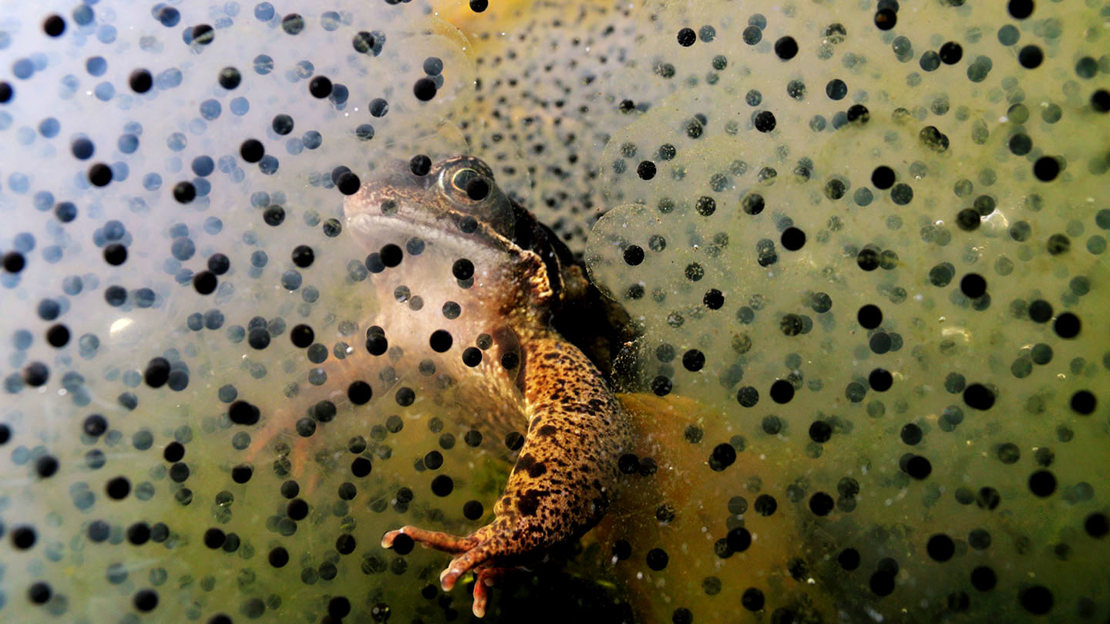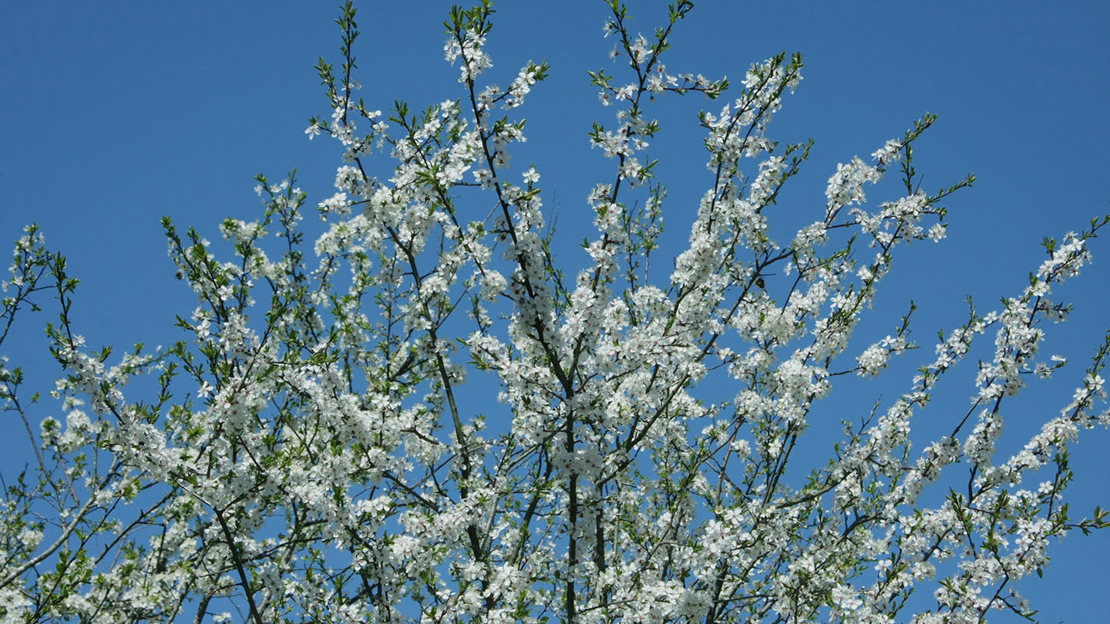Keep observing nature
Help us track the timings of the seasons and the effects of weather and climate change on wildlife.
Record with Nature's CalendarWe asked you to help us track three signs of spring: frogspawn, blackthorn blossom and song thrush song. And you delivered – submitting a staggering 22,570 records from across the UK.
With your help, our scientists have been able to uncover some fascinating insights into how climate change is affecting wildlife and timings in nature.
frogspawn sightings
Frogspawn was first spotted in South West England, moving up the west coast then down the east coast. It follows a classic and expected pattern this year.
song thrush singing
We saw an almost complete UK-wide coverage of records, except for natural gaps like the Scottish Highlands where song thrushes are not found.
blackthorn blossom
Blackthorn blossoms typically appear later than frogspawn and singing song thrushes. This pattern was reflected in the records collected.
As part of our analysis, we looked at the MET office weather reports to understand its effects on nature. Overall, it was warmer and sunnier than average across the UK.
February was warmer than average, with temperatures being especially warm in the last two weeks of the month.
March was 1.3°C warmer than the UK's average, with Scotland and Northern Ireland seeing the biggest jumps (1.7°C and 1.5°C, respectively).
It was also a record-breaking month for sunshine. Most areas saw above average sunshine, particularly in the South East England. England had its sunniest March on record, Wales its second sunniest and the UK overall had its third sunniest. Given these conditions, the big rush of spring records during the month came as no surprise to our scientists.
April continued the trend, ranking as the UK's third warmest on record, with temperatures 1.7°C above average. It was also a very dry month, with just over half of the normal rainfall. Sunshine levels were at a record high, making it the sunniest April the UK has recorded since 1910.
Shifts in temperature and overall weather – like those we saw this spring – can influence the timings of nature. To understand how our three species responded, we compared the first sightings of each with Nature's Calendar's 20-year average.
Vital sign of spring |
Average date observed in 2025 |
20-year average (2000-2019) |
|---|---|---|
Song thrush singing |
18 February |
17 February |
Frogspawn |
8 March |
6 March |
Blackthorn blossom |
12 March |
21 March |
Compared to the 20-year average, song thrush and frogspawn were observed slightly later than usual, while blackthorn bloomed nine days early.
|
Vital sign of spring |
Song thrush singing |
Frogspawn |
Blackthorn blossom |
|---|---|---|---|
|
Average date observed in 2025 |
18 February |
8 March |
12 March |
|
20-year average (2000-2019) |
17 February |
6 March |
21 March |
Compared to the 20-year average, song thrush and frogspawn were observed slightly later than usual, while blackthorn bloomed nine days early.
This year, song thrush singing and frogspawn were first observed just a day or two later than usual. In contrast, blackthorn flowering was spotted nine days earlier.

A beloved but declining species, the song thrush is amber-listed under Great Britain's Birds of Conservation Concern. Although they’re migratory birds in some parts of Europe, they tend to be resident all year round in the UK. They can be heard singing as early as winter, especially during mild weather, but the peak singing season is from March.
Song thrushes breed multiple times a year and are less affected by early springs than thrushes that breed only once annually, like fieldfare. Still, changes in timings can disrupt food webs.

Frogspawn is highly sensitive to temperature. Research shows for every 1°C rise between January and March, spawning occurs 4.5 days earlier.
In 2025, a cooler January was balanced by a warmer February and March. This relatively mild weather helps explain why frogspawn was seen close to the 20-year average.
However, warm spells are becoming more common due to climate change. In some years, we've seen frogspawn before Christmas – fooled into early breeding by unusually warm temperatures. This can be risky as frogs breed only once a year and early eggs are vulnerable to freezing and dying if cold weather returns. Tadpoles are slightly safer as they can swim to the bottom of the pond, which is less likely to freeze.
Experts are divided on whether early spawning is a doomed strategy or a high-risk attempt to get as much tadpole and frog growth as possible during the first year of life, and therefore increase their chances of survival.

Blackthorn blossoms are a vital nectar source for insects that emerge after winter. This is especially important because not many other wild plants are in flower so early.
March and April's warm and sunny weather supported insect activity, and in turn, likely led to more blackthorn pollination. That means a strong crop of fruit, called sloes, is expected later in the year. These fruits are a key food source for birds like mistle thrush and fieldfare.
But climate change can throw nature's timing out of sync. If insects and migratory birds miss key food sources due to changing seasonal patterns, the effects can echo through the food chains and ecosystems.
Help us track the timings of the seasons and the effects of weather and climate change on wildlife.
Record with Nature's Calendar